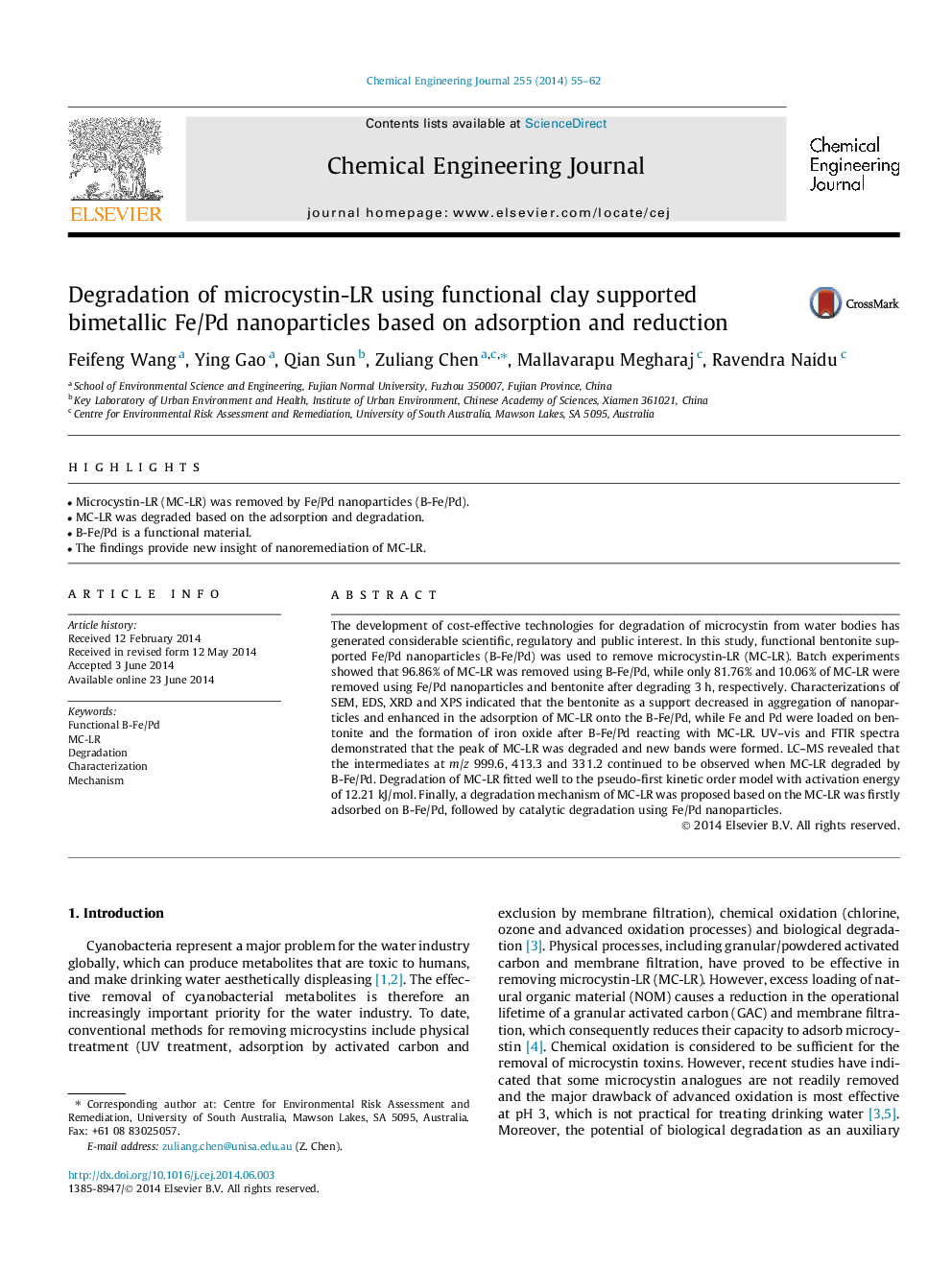| Article ID | Journal | Published Year | Pages | File Type |
|---|---|---|---|---|
| 147044 | Chemical Engineering Journal | 2014 | 8 Pages |
•Microcystin-LR (MC-LR) was removed by Fe/Pd nanoparticles (B-Fe/Pd).•MC-LR was degraded based on the adsorption and degradation.•B-Fe/Pd is a functional material.•The findings provide new insight of nanoremediation of MC-LR.
The development of cost-effective technologies for degradation of microcystin from water bodies has generated considerable scientific, regulatory and public interest. In this study, functional bentonite supported Fe/Pd nanoparticles (B-Fe/Pd) was used to remove microcystin-LR (MC-LR). Batch experiments showed that 96.86% of MC-LR was removed using B-Fe/Pd, while only 81.76% and 10.06% of MC-LR were removed using Fe/Pd nanoparticles and bentonite after degrading 3 h, respectively. Characterizations of SEM, EDS, XRD and XPS indicated that the bentonite as a support decreased in aggregation of nanoparticles and enhanced in the adsorption of MC-LR onto the B-Fe/Pd, while Fe and Pd were loaded on bentonite and the formation of iron oxide after B-Fe/Pd reacting with MC-LR. UV–vis and FTIR spectra demonstrated that the peak of MC-LR was degraded and new bands were formed. LC–MS revealed that the intermediates at m/z 999.6, 413.3 and 331.2 continued to be observed when MC-LR degraded by B-Fe/Pd. Degradation of MC-LR fitted well to the pseudo-first kinetic order model with activation energy of 12.21 kJ/mol. Finally, a degradation mechanism of MC-LR was proposed based on the MC-LR was firstly adsorbed on B-Fe/Pd, followed by catalytic degradation using Fe/Pd nanoparticles.
